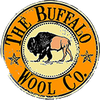Seal hunting is a way of life for the Inuit, they have been feeding and clothing themselves for generations, and it is an integral part of their culture.
We were lucky enough to watch a demonstration and partake in the harvest, we thought you might enjoy a bit of the history and seeing some of the process.
Archeological evidence indicates the Native Americans and First Nations People in Canada have been hunting seals for at least 4,000 years. Traditionally, when an Inuit boy killed his first seal or caribou, a feast was held. The meat was an important source of fat, protein, vitamin A, vitamin B12 and iron,[10] and the pelts were prized for their warmth. The Inuit diet is rich in fish, whale, and seal.
There were approximately 150,000 circumpolar Inuit in 2005 in Greenland, Alaska, Russia, and Canada. According to Kirt Ejesiak, former secretary and chief of staff to then-Premier of Nunavut, Paul Okalik and the first Inuk from Nunavut to attend Harvard, for the c. 46,000 Canadian Inuit, the seal was not "just a source of cash through fur sales, but the keystone of their culture. Although Inuit harvest and hunt many species that inhabit the desert tundra and ice platforms, the seal is their mainstay. The Inuktitut vocabulary designates specific objects made from seal bone, sinew, fat and fur used as tools, games, thread, cords, fuel, clothing, boats, and tents. There are also words referring to seasons, topography, place names, legends, and kinship relationships based on the seal. From WikiPedia

The Alaskan state fair has established an area dedicated to the local artists, food vendors, musicians and dancers.
Dena - The peoples place, to embrace and educate the culture of multiple communities of Alaska.
Here we are share with you butchering of a seal from the island of Kodiak, If you don't like the processing of animal for consumption, this is your opportunity to stop.
A crowd gathered at the back of the gathering place under a pop up tent, so I knew I was heading in the right direction. I was able to find a spot in the grass which give me a front row seat to witness the process.
Only the Inuit people can legally hunt seal, and must have proof that they are at minimum 1/4 native. Any person in a seal hunting boat who doesn't meet the this qualification can be fined heavily or imprisoned by U.S. Fish and Wildlife.
The program expresses the importance that every seal is harvested to feed the community and provide materials for clothing.

Our presenter is Phyllis Lestenkof, and after watching her, I believe she has done this before, maybe a few hundred times... the skill and efficiency was instantly apparent.
Starting by laying out the seal, Phyllis sharpens her traditional ulu knife, an ulu is used to cut herbs, vegetable, nuts, cheeses, meat and even pizza making it a one knife that does everything.
The seal was caught and flown in frozen for the demonstration, caught along the Kodiak island chain.

The process took less than an hour to carefully separate the fat from the carcass, making sure not to nick the hide.

Every part of the animal is used from, for food, clothing, or tools. Even the whiskers are used, and attached to the fishermen's hats to the help the men on the boats signal when the winds pickup, so they can return to the shore safely.
Through the graciousness of some of our Alaskan friends, Ron and I have had the honor to try quite a few interesting and delicious things, seal oil, bow and beluga whale, bear, moose, caribou, salmon and many other fish …but I have to say the seal backstrap (tenderloin) was probably the best of all. We do appreciate good grilled/smoked meats, it did not taste like chicken... and as best I can describe it was something like an iron-rich, very "beefy" ribeye, no fishy taste whatsoever (I really expected it to be fishy), dark red, and quite lean.
5 Stars, would definitely recommend.
We love the opportunity to experience what other humans are doing on this planet we all share together, thank you for your time to share this with you, it's love to support each other. I am not a "professional writer or photographer" but a fellow human wanting to share the amazing things we do in this thing we call life.
Photos and story by Theresa Miskin.











Dearest Fellow Human,
What an amazing experience. Thank you for sharing. I could imagine the process being taught through the generations over 4,000 years. Also nice to hear that this traditional, family gathering staple is also delicious. Next time, I am joining you on your adventure.
T. You do a wonderful … and gentle … job of capturing the beauty of life. Keep shooting and writing (and keeping Ron more in check than anyone else in the Universe!!). C.
Your article and photos are fascinating! Learning of the circumpolar peoples and history of seal hunting made an odd cultural connection with my Scottish ancestry. The Scottish highlanders often wore a sporran that allowed the carrying of grain to chew for food and a few coin, if the lad had the means. Part of the sporran was often made of sealskin, badger, skunk skins, etc. With the EU and UK banning the import of sealskin, the incomes of these Alaskan and resident polar families is severely curtailed. Your article has me wondering about things I’ve never explored before now. Thank you for stretching my understanding.
Thank you for generously sharing your adventures with us.
My friend Phyllis grew up here in the Kotzebue area, she’s a gem and a real tough Alaskan girl.
Leave a comment